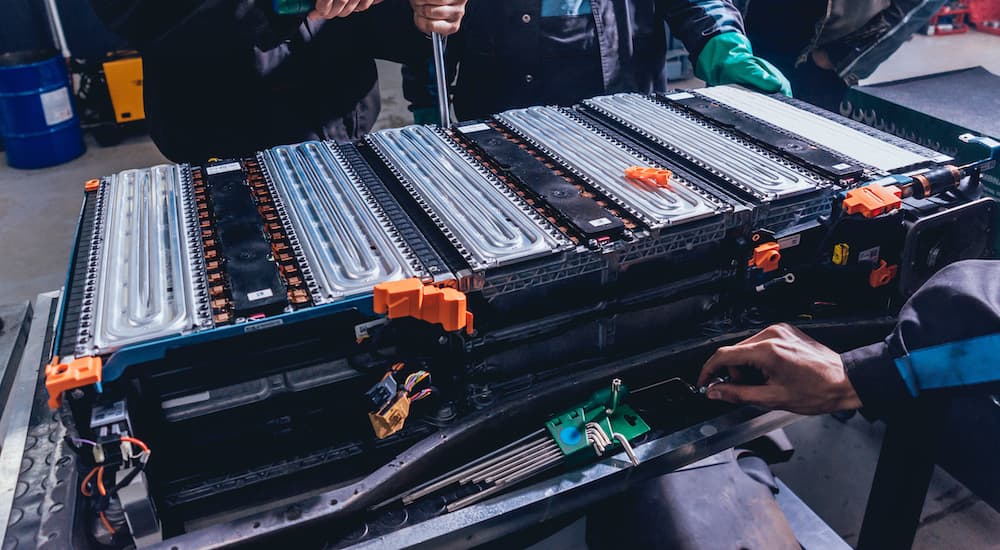As the segment continues to grow, EVs are now more affordable than ever. While all-electric vehicles still tend to be a little pricier than their gas-powered forerunners, new EV prices have fallen by as much as 20 percent over the last year. The difference is especially stark when it comes to used EVs, which have seen a dramatic price drop over the last 12 months. According to a 2023 study by iSeeCars, the average sale price of a used EV fell by over a third compared to late 2022. Throw in some generous federal and state tax credits that can help offset the price by as much as $12,500, and one thing becomes crystal clear. There’s never been a better time to buy a new or used EV.
But the purchase price isn’t the only factor to consider when pinpointing the true cost of vehicle ownership. While EVs have an advantage when it comes to fuel costs, setting drivers back just $546 per year as compared to $1,255 for the typical gas-powered vehicle, maintenance costs are also a major factor when it comes to lifetime ownership costs. According to a study by AAA, annual EV maintenance will cost around $950, compared to almost $1,300 for a gas-powered vehicle, thanks to its lack of a complex gas-powered engine and all its associated components and fluids, not to mention a comparably low amount of wear-and-tear to the brakes thanks to the use of regenerative braking. That’s not to say EV maintenance can be neglected. Failing to keep up with the manufacturer’s recommended service schedule is a great way to quickly erase an EV’s cost-saving advantage, not to mention jeopardizing the extended warranty. How should you approach routine maintenance for your EV? We’ll get into all that and more as we take a closer look at what it takes to keep your EV on the road.
Battery
An EV’s battery is easily one of its most vital components. An EV’s electric motor(s) might be responsible for actually pushing an all-electric car, truck, or SUV down the road, but with an average replacement cost that ranges between $5,000 and $20,000, the battery is typically the most expensive component in any EV. Taking steps to maintain battery health is an important part of any EV maintenance routine and should never be treated as an afterthought.
As EVs have become more popular, some of these battery-related best practices have become common knowledge, but a little refresher never hurts.
80/20 Rule: The 80-20 rule describes an EV battery’s optimal charging range. In most cases, drivers will want to avoid charging their EVs above 80 percent or letting the battery fall below 20 percent. Erring too much towards either end of this spectrum can impact long-term battery health and require a costly replacement. Many EV chargers can be set to bring the vehicle to a certain charge level, making it easy to stay within the recommended range.
Fast Charging: Using DC fast-charging stations can also take a toll on your battery. While they might be convenient when you’re on a long road trip or looking for a quick top-off, relying too much on fast charging can lead to an EV battery worn out well before its time.
Storage: Battery health shouldn’t be neglected even when your EV is not in use. Exposing your electric vehicle to extreme hot or cold weather will cause the built-in battery management system to kick into overdrive as it struggles to keep the battery at the correct operating temperature. This process will draw power from the battery itself, slowing draining the electricity and putting a real strain on the system. Try to avoid such high and low temperatures. When storing your EV for an extended period, keep it connected to a charger that can keep it in the 80-to-20-percent range.

Coolant
An EV might not be powered by the same gas-burning engine as an ICE vehicle, but that doesn’t mean it doesn’t need a little help staying cool. Most EVs are designed with a battery management system that helps to keep the power pack at the correct temperature for peak performance. Like an ICE vehicle’s radiator, an EV’s thermal battery management system needs occasional TLC, normally in the form of some fresh coolant. While the timeline varies from model to model, many EVs call for a coolant flush or refrigerant recharge every 50,000 miles. As always, check the maintenance schedule in your owner’s manual for the recommended interval.
Fluids
While gas-powered vehicles typically require no less than seven distinct fluids — motor oil, transmission fluid, brake fluid, engine coolant, power steering fluid, differential fluid, and windshield washer fluid — EVs get by on just three. In addition to the coolant, EV drivers must keep an eye on their windshield washer and brake fluid. Failing to address the first will typically only result in a minor inconvenience, but brake fluid should never be neglected, given its role in maintaining a vehicle’s overall safety. Replacing your brake fluid every three to five years is the industry norm, but again, check the maintenance schedule for your specific make and model.
Air Filter
The lack of a gas-powered engine means that EVs can get away with engine air filters, but the cabin air filter is a different story. Responsible for cleaning dust, dirt, and other pollution from the air, regularly replacing your cabin air filter is an easy way to ensure you’re breathing easy behind the wheel. Cabin air filters retail for as little as $15 and can be easily installed by even the least mechanically inclined driver, so there’s no excuse for skipping out on this basic maintenance task.
Brakes
Electric powertrain aside, EVs still rely on the same brake pads, rotors, and calipers found in every vehicle on the road. That said, an EV’s brakes tend to last much longer because they’re not the only component responsible for stopping the vehicle. Most EVs are built with regenerative braking, a system that essentially sees the electric motors pulling double duty for enhanced braking. When a driver has regenerative braking activated and lets off the accelerator, the electric motor essentially kicks into reverse, using the momentum of the drive wheels to recharge the battery. This process provides resistance to the wheels that can help bring an EV to a stop all on its own. The regenerative braking system not only captures mechanical energy and transforms it back into electrical energy to recharge the battery, but it also takes a load off the standard brake pads and rotors. How effective is this approach? You only need to look at the numbers. While the brake pads and rotors on an ICE vehicle must be replaced every 30,000 to 60,000 miles, EVs have been known to log as many as 100,000 miles between replacements, though drivers should still perform regular brake inspections.

Tire Rotations
Tire rotations are important on any vehicle, but they can be easy to forget when it comes to an EV. Most automakers recommend rotating your tires every other time you get your vehicle’s oil changed, but since EVs don’t require oil changes, it can be hard to keep track. Regular tire rotations involve moving tires from one corner of the car to another, which helps ensure even wear and tread depth. Tire rotations should be performed every 6,000 to 10,000 miles, though the exact schedule might vary between models and depend on whether you’re working with a front, rear, or four-wheel drive vehicle.
Wheel Alignments
Unlike some of the other maintenance tasks mentioned on this list, wheel alignments are typically the same whether you’re dealing with a gas- or battery-powered vehicle. Wheel alignment refers to the angles between the wheels and the centerline of the vehicle. Over time, this alignment can be thrown out of whack due to normal use, resulting in an EV that seems to drift to one side. In extreme cases, poor alignment can produce extreme results, like a vehicle that shakes and shudders as it moves down the road. A wheel alignment should be performed every year or 15,000 miles and should always be done by a professional.
With an expanding slate of models, lucrative federal and state tax credits, and lower prices across the board, EVs are truly coming into their own. The increase in EV charging infrastructure has made all-electric vehicles a more viable option for drivers of all stripes, with 51 percent of car buyers now considering a new or used EV when it comes time for their next vehicle. Factor in the lower maintenance cost, and it’s easy to make the case for picking an EV when it comes time to start shopping for your next car, truck, or SUV. Some drivers might be intimidated when it comes to making the jump to the all-electric segment, but once you wrap your head around a few key concepts, you’ll find that EVs are much easier to understand than their gas-powered forerunners. This relatively simple design confers some real benefits when it comes to regularly scheduled maintenance, with EVs requiring less attention when it comes to things like fluids, brakes, emissions systems, belts, hoses, and more. Still, some EV-specific tasks should never be neglected, which is why a little time spent thumbing through your owner’s manual can pay off in the long run.

